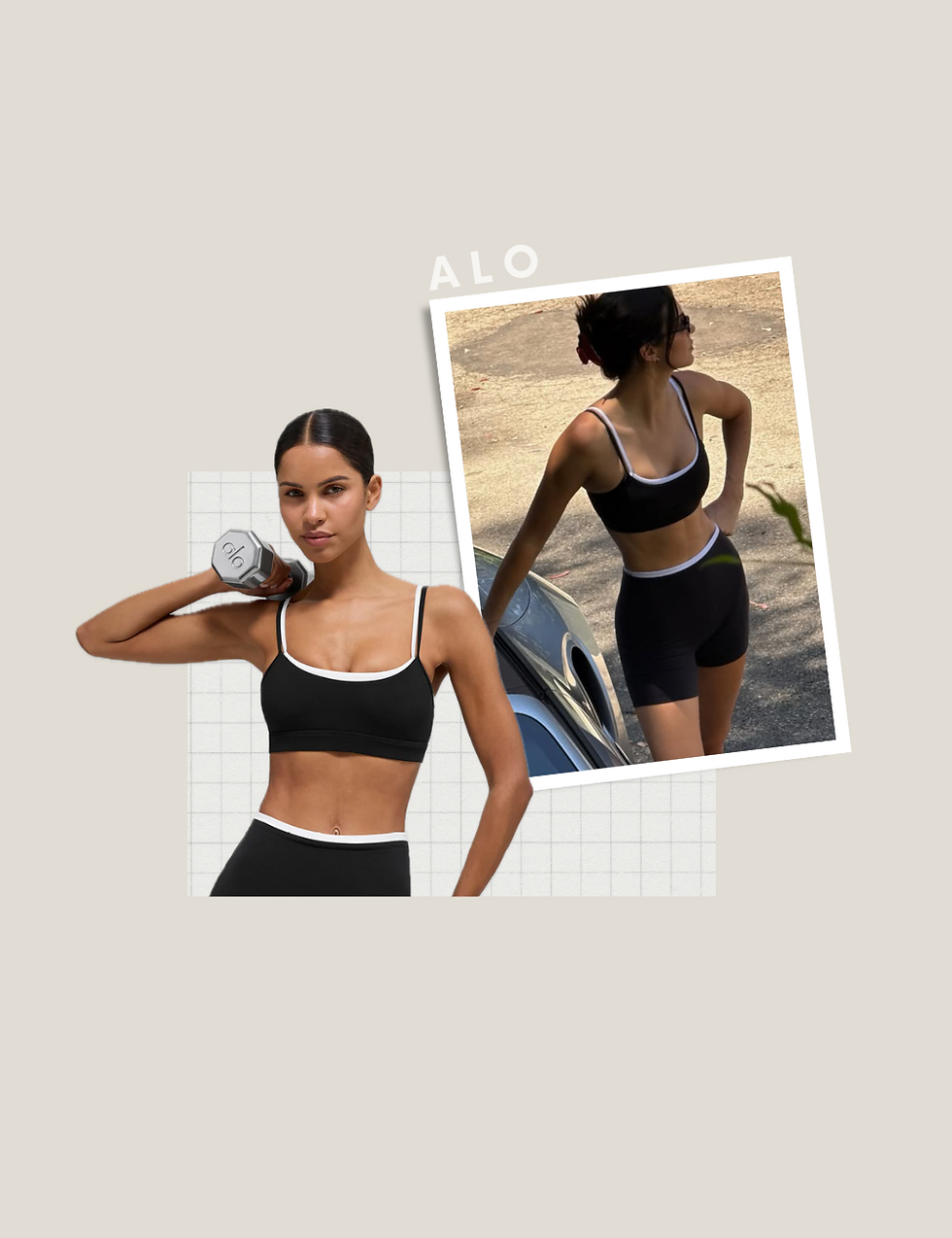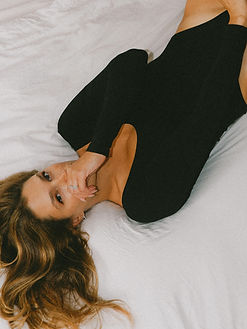How Emma Chamberlain Inspired Me to Shop Less in 2025
- R A E

- Jan 15
- 6 min read
Updated: Feb 25

Shopping has always been a huge part of my life, both personally and professionally. As a fashion lover, I’ve always had a deep appreciation for clothing. The textures, the colors, the trends—there’s something magical about a new piece added to your wardrobe. But after a year of reflecting on my consumption habits, I realized something had to change. Shopping endlessly wasn’t just about newness anymore—it was affecting my finances, my space, and even my mindset.
That’s when I stumbled upon the one in, one out rule, and it completely transformed my approach to shopping. I’ve always prided myself on having an eye for fashion, but what I wasn’t paying attention to was how much stuff I had—stuff that I didn’t even need or, worse yet, didn’t even wear. This year, I’ve committed to shopping less, and I’ve found that not only is it possible, but it’s also liberating.
In this article, I’ll dive into how I’ve been putting the one in, one out rule into practice, the mindset shifts that helped me stop over-shopping, and how Emma Chamberlain’s I Got Rid of (Almost) Everything video pushed me into taking real action. It’s not just about being frugal—it’s about being intentional. Let’s get into it.
Why Shopping Less Is the New Black
Let’s be real: shopping can be addictive. In a world where fast fashion reigns supreme, it’s easy to fall into the cycle of constantly wanting something new. New seasons bring new trends, and before you know it, your closet is overflowing with clothes you’ve worn only once or twice. And honestly, I’ve been guilty of this. At one point, it seemed like I was constantly buying something, even if I didn’t need it.
That’s when I realized the problem wasn’t just about how often I shopped—it was about my approach to consumption. I’d always justified my shopping habits by telling myself I deserved it or that it was part of my job. But I’ve learned that being mindful about what I buy—not just for the sake of my wallet but also for the sake of my mental and physical space—was key. So, this year, I made a conscious decision to curb my shopping habits. And trust me, I’ve never felt better about it.
The One-In, One-Out Rule
The one in, one out rule is as simple as it sounds: for every new item you bring into your wardrobe, you have to get rid of something else. Whether that’s donating an item, selling it, or just recycling it, the idea is to make sure your closet doesn’t expand infinitely.
At first, it felt tough. I love new fashion, and saying no to things was a challenge. But what really helped me stick to the rule was the fact that it forced me to examine my wardrobe with a critical eye. Every time I bought something new, I had to think carefully about what I was willing to part with. That one simple decision changed how I approached shopping altogether.
If I’m being honest, it wasn’t always easy. There were times when I fell in love with a new piece and had to work hard to find something to let go of. But over time, I realized the “one-in, one-out” rule wasn’t just about preventing excess—it was about becoming more intentional with my choices. And that’s when I started to really appreciate the pieces I already owned.
Emma Chamberlain’s Video: The Moment I Realized I Had to Make a Change
Sometimes, all it takes is one video to spark a major shift in your life. For me, that video was Emma Chamberlain’s I Got Rid of (Almost) Everything. I watched it like most people watch a YouTube video—casually, in bed, with snacks in hand. But what I didn’t expect was the wave of motivation that would wash over me. Emma’s honest and unfiltered approach to decluttering, combined with her emphasis on how much lighter she felt after getting rid of things, was a wake-up call for me.
As a fashion writer, I’d always told myself I had to keep up with the trends, the season’s must-haves, the newest it-bags. But Emma’s video helped me see how much freedom there was in simplifying. I realized I didn’t need to have the latest and greatest all the time. I could curate a wardrobe that worked for me—not because it was trendy, but because it was functional, timeless, and true to my style.
After watching the video, I immediately started to make plans for my own closet overhaul. Instead of purchasing more clothes, I made a pact with myself: I would focus on wearing what I already owned and being more intentional with any future purchases. 2025 became my goal year to fully embrace minimalism in my closet.
Shopping Less: A Conscious Approach to Fashion
Let’s get one thing straight: this isn’t about depriving myself of the joy of fashion. It’s about making intentional choices. In fact, shopping less has opened my eyes to new possibilities for how I can still stay stylish without constantly buying new pieces.
Here’s what I’ve learned so far:
Shopping Your Own Closet - Before I even think about buying something new, I make it a point to shop my own closet first. This might sound simple, but it’s incredible how often we forget about the gems we already own. I’ve rediscovered pieces I completely forgot about, like a vintage leather jacket that I never thought to pair with a new skirt. When you take the time to really look through your closet, you start to realize how much potential your current wardrobe holds.
The Capsule Wardrobe Mentality - The capsule wardrobe has been a game-changer for me. It’s all about curating a small, versatile collection of clothes that you can mix and match. Think neutral colors, classic pieces, and functional items. I’m all about buying quality over quantity these days. Instead of purchasing something just because it’s “on sale” or “trendy,” I focus on investing in timeless pieces that can stand the test of time. A well-structured blazer, a perfect pair of jeans, or a leather handbag—those are the items that make me feel good and will last for years to come.
Repair and Upcycle - A small rip or a missing button shouldn’t mean the end of a piece’s life. I’ve gotten pretty good at mending small damages myself—whether it’s patching up a hole in my jeans or adding a new button to an old coat. This not only saves money but also helps reduce waste. When I feel like I’m getting bored of a piece, I’ll often take a second look and think about how I can update it to make it feel fresh again. That old cardigan that feels a bit drab? Maybe a quick dye job will give it a new lease on life.
Thrift Shopping for Unique Finds - If I do decide to buy something new, I try to focus on secondhand pieces. Thrift stores and online marketplaces like Depop and Poshmark have become my go-to spots. There’s something special about finding a unique item that’s both sustainable and affordable. Plus, it’s a fun way to contribute to the circular economy.
Quality Over Quantity - For the rare occasions when I do buy new clothes, I’ve made a conscious effort to invest in quality items that I know will last. Whether it’s a well-made dress or a sturdy pair of boots, I’m more focused on longevity than chasing the latest fast fashion trend.
The Beauty of Intentional Shopping
The biggest lesson I’ve learned this year is that shopping less isn’t about deprivation; it’s about finding joy in what you already own and being intentional with every purchase. The “one-in, one-out” rule has been a game-changer, forcing me to reassess my shopping habits and become more thoughtful about my wardrobe. I no longer feel the constant pressure to buy new things, and instead, I’ve found satisfaction in mixing and matching, thrifting, and focusing on quality over quantity.
2025 is going to be the year of intentional shopping for me. I’ll keep embracing the capsule wardrobe, repairing clothes, and seeking out sustainable options. It’s not about buying less for the sake of it—it’s about being mindful of what I bring into my life and choosing items that truly add value to my wardrobe.
Shopping less doesn’t mean you can’t enjoy fashion—it just means being more thoughtful about it. With a bit of planning, creativity, and a focus on quality, I’m confident that this new approach will continue to serve me well. I hope this inspires you to rethink your shopping habits too. It’s not always easy, but with small steps, we can all make more mindful choices and contribute to a more sustainable future for fashion.
Love,
Rae
Image Credits - Lany-Jade Mondou



















.jpg)
Comments